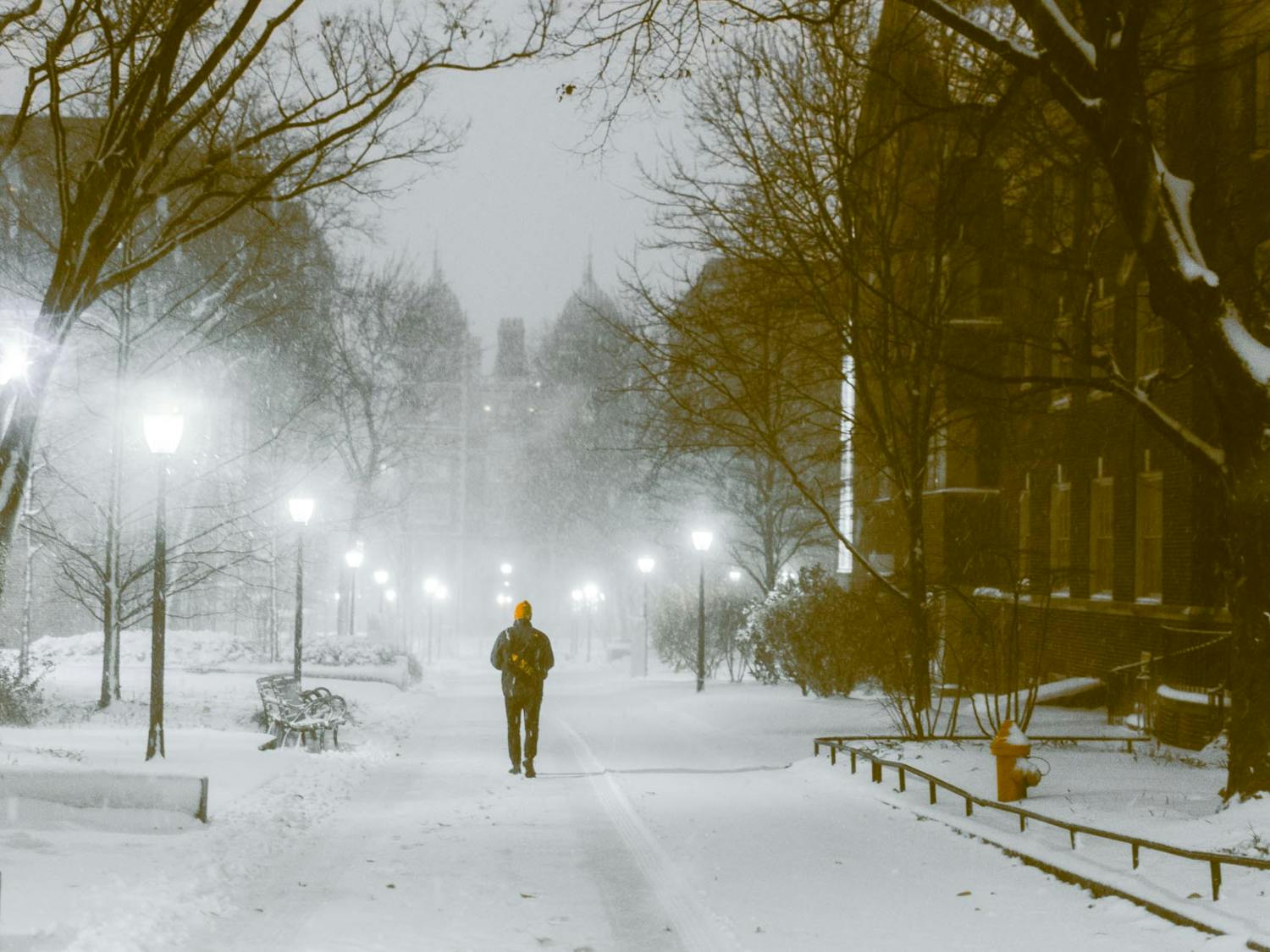Part of Penn’s appeal as an institution of higher education is its elite status and the prestige associated with attending an Ivy League school. However, Penn’s prestigious reputation also results in a massive concentration of the wealthy and powerful who have historically attended elite colleges, often disproportionately aided by generational advantages such as legacy status.
Despite being aware of this fact, coming from a working to middle-class background, the general wealth of Penn students and the ostentatious displays of this wealth were jarring to me. Any normalization of this affluence that I had subconsciously internalized during the fall quickly dissipated as winter arrived — and with it, the infamous Canada Goose and Moncler jackets became nearly ubiquitous on Locust Walk. Wearing my own hand-me-down coat gifted to me by grandfather, I found it hard not to marvel at the popularity of the jackets despite their exorbitant price — generally around $1000 for a Canada Goose and over $2000 for a Moncler.
While the winter season highlights the sheer wealth of Penn’s student body, the culture of consumerism that is catered towards upper-class peers is deeply pervasive throughout student life year-round. After all, more students at Penn are from the top 1% than the bottom 60%, so it makes perfect sense that this should be the case. Upon arriving on campus, I observed this almost immediately through a social life heavily centered around restaurant dining, traveling into Philadelphia, and retail shopping, among other things. I found myself going out to eat with friends at local or fast-food restaurants as many as three to four times a week. This constant spending on food alone — even though I already was on a $5,946 dining plan — was simply not sustainable. However, in my attempts to conserve money and spend responsibly, I was also missing out on spending time with my peers or getting to know new people.
Although I was always invited to dinners or shopping trips, there is a certain feeling of otherness in not being able to buy food or clothes when surrounded by others who do so without a second thought. As a result, I was continually faced with choosing between the uncomfortable situation of awkwardly tagging along to outings without being able to spend money or simply not going at all.
This brings me to my first point: Penn students of all socioeconomic backgrounds should attempt to shift the norms of social life to be less centered around money-spending activities and instead towards spending quality time with friends in an affordable, or preferably free, manner. I believe such a shift would go a long way in fostering an environment in which low- to middle-income students — a major portion of Penn’s student body — can form meaningful relationships with their peers without feeling pressure to break the bank. Additionally, this change is increasingly important and necessary as Penn continues to commit to maintaining a low-income student population.
Beyond on-campus life, the concentration of wealth within the Penn bubble also puts the majority of the University’s students at odds with the surrounding West Philadelphia area where the median annual household income is around $35,000. To put this into perspective, the national median income is approximately $67,000, nearly double that of the West Philadelphia area. Meanwhile, the median family income across the Penn student body is $195,000 (over 5.5 times that of the surrounding neighborhoods). Now this alone is not necessarily indicative of anything, but it is clearly evident — especially after a Wharton professor polled her class on the average American worker’s salary and found over a quarter of her students thought it was over six figures — that Penn students at large are detached from the realities of working class life.
This brings me to my second point: I believe that Penn students of all backgrounds — but especially those who do not have personal middle- or working-class experiences — have a responsibility to recognize the realities of life outside the Penn bubble. It is important that students who are sporting Canada Goose and Moncler jackets realize that they are wearing over one month’s worth of rent in a neighborhood just blocks away. The concentration of wealth and privilege at Penn does not exempt Penn students from remaining vigilantly cognizant of the disparities that exist both on our own campus and just minutes off campus. In fact, it necessitates such reflection and awareness. As the future leaders of this country, it is imperative that Penn students work to be aware of these realities in order to translate this awareness into proactive action later in life, such as advocacy and organizing grassroots change.
By doing so, Penn students as a whole can develop a necessary and more holistic understanding of working- and middle-class life while fostering a more inclusive community for all.
SEE MORE FROM VINAY KHOSLA:
VINAY KHOSLA is a College first year studying philosophy and political science from Baltimore, Md. His email is vkhosla@sas.upenn.edu.









